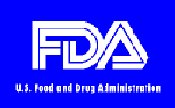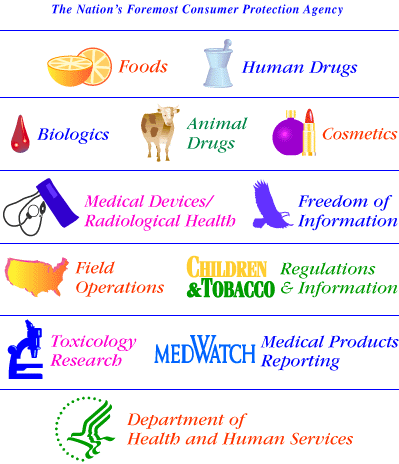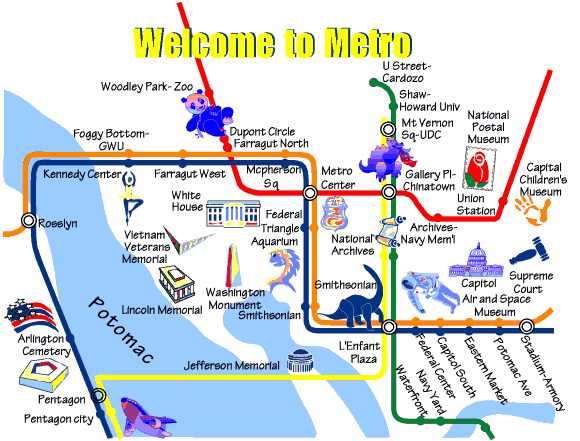
ENV 103 ENVIRONMENTAL HEALTH
Fall 1998
A TRIP TO THE FOOD AND DRUG ADMINISTRATION
Washington, DC
October 7 and 14, 1998


The first field trip for the ENV 103 course broke the large class into two groups of approximately 55 students each for the trip (via the Metro subway system) to the downtown Washington DC facility of the governmental agency. One group went on October 7, 1998; the second group ventured out on October 14.

Each group initially met for an over all session presented by Dr. Ben Tall. Dr. Tall
listed the purposes of the visit:
Dr. Tall then discussed issues involved in questions about food safety and foodborne disease outbreaks. He stressed the importance of defining the specific disease before looking at causative agents, and the FDA’s role in examining how likely any outbreak is to occur and how industry and the FDA can prevent it from happening again, by implementing standards for food safety. He emphasized that infectious diseases are still the leading cause of death throughout the world, with overcrowding, unsanitary conditions, malnutrition. Globalization of human population, and the domestication of animals for food has also had a major impact on the safety of our food supply.
At the conclusion of the introductory session, the group was divided into smaller groups who visited labs of different researchers at the facility. These scientists allowed the students to see actual work being performed, and gave many of them their first opportunity to see that the federal government was not totally bureaucratic paperwork, but truly hands-on labor to make life better for our country’s inhabitants.
Students visited the labs of the following individuals and were introduced to their current research projects:
1. Dr. Ben Tall: Electron microscopy (EM) facility and public health significance of marine Vibrio infections in seafood.
Dr. Tall introduced students to the uses of electron microscopy in studying microorganisms and then talked about vibrio contamination in seafood, and the need for proper cooking and cleaning when working with these potentially contaminated seafoods (or food in general). He showed the students several uses of EM in identifying microorganisms on contaminated surfaces.
2. Dr. Farukh Khambaty: Using molecular epidemiology in tracking down foodborne diseases
The students visiting Dr. Khambaty’s lab learned about the use of DNA fingerprinting, using Pulsed-Field Gel Electrophoresis (PFGE) to identify specific strains of microorganisms indicated as causative agents in outbreaks. This method is particularly useful if outbreaks are scattered across the country, but may have had a common food source.
3. Mr. Leroy Kornegay introduced his visitors to the uses of antibiotic susceptibility patterns as a way of tracing foodborne disease outbreaks.
4. Ms. Vickery Brewer: Seafood Toxins
In this section, the importance of algae in the food chain and various food webs was introduced to the students. They learned that many toxins in seafood arise from phytoplankton, which are consumed by larger organisms and follow up the food chain to humans. They were shown how a seafood toxin contamination is followed, by piecing back through the chain and eventually isolating, culturing and growing the toxic algae involved.
5. Mr. Scott Dolan: Detection of toxic substances by the use of Mass Spectrophotometry
This technology is used to detect the chemical components of possible toxic substances, dividing them into organic and inorganic categories. Using this particular type of examination, toxic trace elements, such as arsenic or lead, can be pinpointed within suspected contaminated substances. These methods are used to identify suspected contaminated food or drugs from all around the country.
At the conclusion of the trip, each class member wrote a 1-2 page paper, incorporating their responses to the following general questions:
Student responses were very positive to the trip. They were impressed by the types of work being done by the FDA and underwhelmed by the facility --- most students had expected a grandiose building and humbling surroundings. The researchers explained their work in ways that the students could identify with usefulness in everyday life.
The timing for this trip could not have been better, as many students on campus had been victims of a foodborne or waterborne infection during the week of September 28 - October 2, 1998. The lessons learned from the concurrent classroom lecture topics on foodborne illness and the FDA visit were most appropriate at this particular time.

 Click here to go to the Field Trips Index Page!
Click here to go to the Field Trips Index Page!
 Click here to fly back to the Home Page!
Click here to fly back to the Home Page!